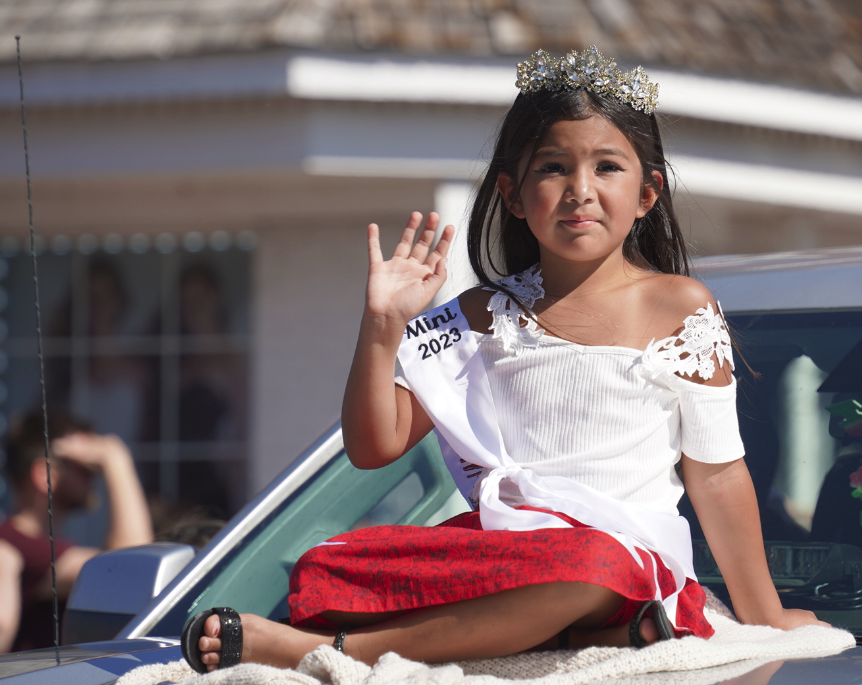
- Details
- By Chuck Hoskin Jr
Guest Opinion. Every Labor Day weekend marks a special time for reflection and celebration by Cherokees. The Cherokee National Holiday recognizes the 1839 signing of the Cherokee Nation Constitution, which formally established our government in Indian Territory.
This year, the Cherokee Nation has an additional reason to commemorate our collective history. As we gather to celebrate the 72nd Cherokee National Holiday, we also mark the opening of a groundbreaking new exhibit at the Cherokee National History Museum: “One Land, One Nation: Cherokee Unification After Removal.”
This exhibit, which runs through March, offers a profound exploration of our Nation's remarkable journey of reunification following the devastating forced removal in the 1830s. It tells how the Cherokee people endured the Trail of Tears and other immense challenges, yet still managed to overcome our divisions to rebuild a strong, united nation.
This act of reunification in 1839 was nothing short of miraculous, as it involved three distinct groups of Cherokee — those who emigrated to the present-day Cherokee Nation Reservation a decade earlier, those who emigrated in the years immediately following ratification of the Treaty of New Echota, and those who remained in our homelands until their expulsion in 1838 — coming together to form a cohesive, sovereign nation once again.
Delving into this history, we are reminded of the resolute spirit of our ancestors. The inspiring leaders of that era demonstrated extraordinary statesmanship and courage. They understood that the survival and prosperity of the Cherokee people depended on working together for the common good. Despite their differences and the trauma, they endured, and they chose unity over division.

In 2024, we celebrate under a theme titled “Weaving Our Future.” This theme beautifully encapsulates the idea that every Cherokee, regardless of their background, contributes to the rich tapestry of our culture and history. It also references the countless ways in which Cherokee culture is intertwined with every facet of our daily lives, from the revitalization and preservation of the Cherokee language to the care and support we provide to our elders and youth. The fabric of the Cherokee Nation is stitched together by the values and traditions handed down by our ancestors, as well as by the contributions of all Cherokees, no matter where they reside.
Whether you are attending to enjoy the inter-tribal powwow, the parade, the art show, the annual State of the Nation address, or other cultural events, I hope you will take time to visit the powerful exhibit at the Cherokee National History Museum. Remembering the trials we have overcome gives me great hope and determination for what we will achieve in the future. The legacy of our ancestors is a responsibility we all share to ensure that the Cherokee Nation continues to thrive for generations to come.
This Cherokee National Holiday, I hope we recommit ourselves to the principles that have guided our Nation for nearly two centuries — unity, resilience and dedication to the well-being of all Cherokees.
Chuck Hoskin, Jr. is the principal chief of the Cherokee Nation.
More Stories Like This
The Absence of October's Job Report Shows Why Native American Communities Need Better DataTribal IDs Are Federally Recognized. ICE Agents Are Ignoring Them.
Thanksgiving: Part of "Broken Circle Holiday"
Thanksgiving is a Tradition. It's Also a Lie
Decisions About Us, Without Us: Education Dismantling Ignores Tribal Nations
Help us tell the stories that could save Native languages and food traditions
At a critical moment for Indian Country, Native News Online is embarking on our most ambitious reporting project yet: "Cultivating Culture," a three-year investigation into two forces shaping Native community survival—food sovereignty and language revitalization.
The devastating impact of COVID-19 accelerated the loss of Native elders and with them, irreplaceable cultural knowledge. Yet across tribal communities, innovative leaders are fighting back, reclaiming traditional food systems and breathing new life into Native languages. These aren't just cultural preservation efforts—they're powerful pathways to community health, healing, and resilience.
Our dedicated reporting team will spend three years documenting these stories through on-the-ground reporting in 18 tribal communities, producing over 200 in-depth stories, 18 podcast episodes, and multimedia content that amplifies Indigenous voices. We'll show policymakers, funders, and allies how cultural restoration directly impacts physical and mental wellness while celebrating successful models of sovereignty and self-determination.
This isn't corporate media parachuting into Indian Country for a quick story. This is sustained, relationship-based journalism by Native reporters who understand these communities. It's "Warrior Journalism"—fearless reporting that serves the 5.5 million readers who depend on us for news that mainstream media often ignores.
We need your help right now. While we've secured partial funding, we're still $450,000 short of our three-year budget. Our immediate goal is $25,000 this month to keep this critical work moving forward—funding reporter salaries, travel to remote communities, photography, and the deep reporting these stories deserve.
Every dollar directly supports Indigenous journalists telling Indigenous stories. Whether it's $5 or $50, your contribution ensures these vital narratives of resilience, innovation, and hope don't disappear into silence.
 The stakes couldn't be higher. Native languages are being lost at an alarming rate. Food insecurity plagues many tribal communities. But solutions are emerging, and these stories need to be told.
The stakes couldn't be higher. Native languages are being lost at an alarming rate. Food insecurity plagues many tribal communities. But solutions are emerging, and these stories need to be told.
Support independent Native journalism. Fund the stories that matter.
Levi Rickert (Potawatomi), Editor & Publisher
